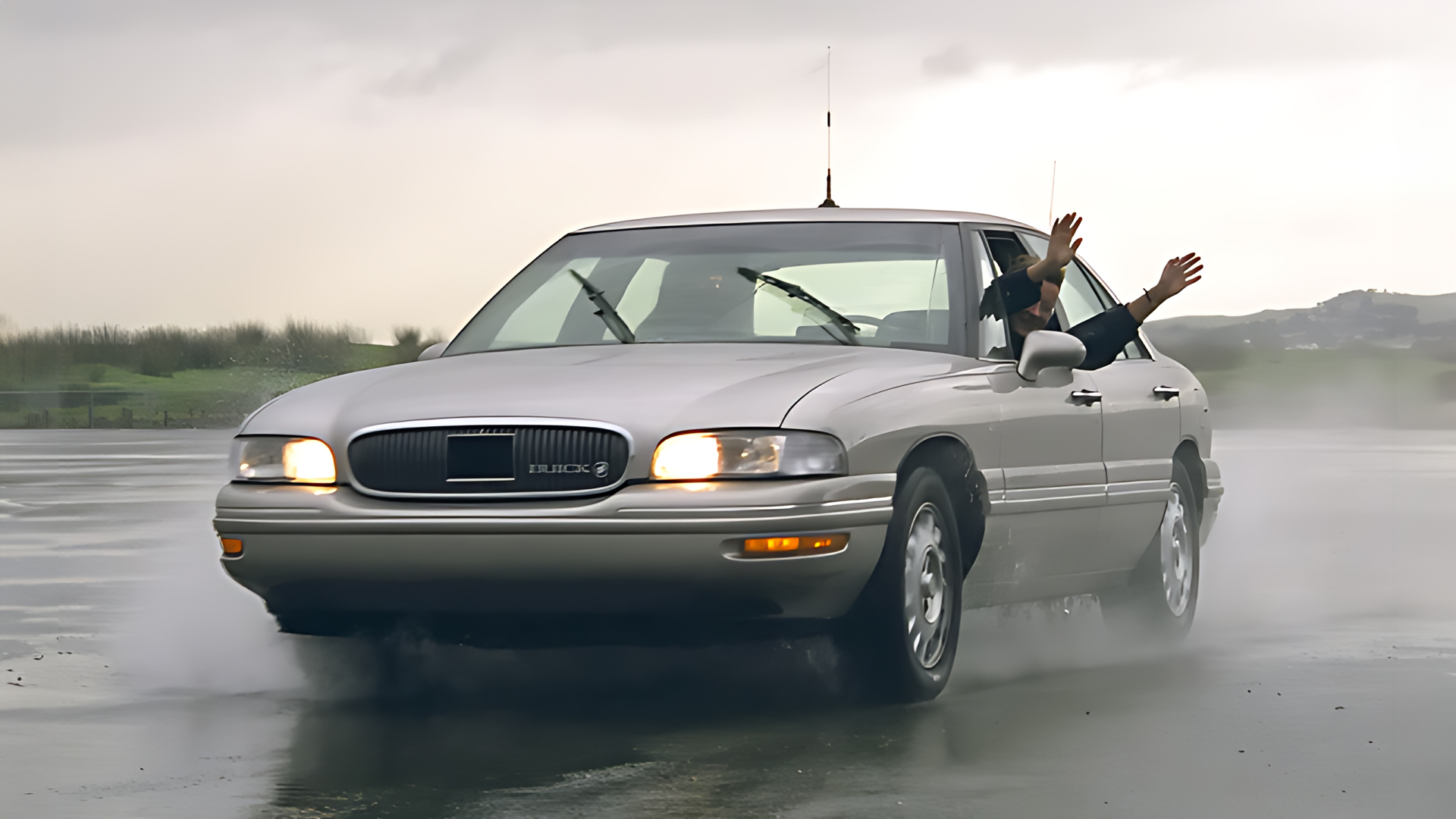

We may earn revenue from the products available on this page and participate in affiliate programs. Learn more ›
Self-driving cars are the future—or, at least that’s what you’ll hear from key players like Waymo, Cruise, and the pack of carmakers spending billions on hands-free personal transportation. It isn’t a new concept, though. The idea of self-driving cars can be traced all the way back to the turbine-powered 1956 Pontiac Firebird II concept, and it’s only grown from there.
Perhaps even more interesting is the huge government-backed infrastructure investment in autonomous cars trialed in the 1990s. No, we’re not talking about the DARPA Grand Challenge—it’s an even earlier event that helped pave the way for today’s in-car driver assistance tech. Nowadays, that tech is about convenience, but in the ’90s, the idea was to use driverless tech to increase safety and decrease road traffic using now-rudimentary equipment like magnets and low-definition cameras.


It begins all the way back in 1991. The U.S. Congress passed the Intermodal Surface Transportation Efficiency Act of 1991, a $155 billion initiative that funded highways, transportation safety, and mass transit through 1997. Part of the act, however, required the Department of Transportation to “develop an automated highway and vehicle prototype” so that the “first fully automated roadway [would be] in operation by the end of 1997” to help curb the growing problem of surface transport traffic congestion.
By 1994, the National Automated Highway System Consortium was formed to help tackle that task. The consortium was comprised of nine different entities: Bechtel, the California Department of Transportation, Carnegie Mellon, General Motors (including its subsidies, Delco Electronics and Hughes Electronics), Lockheed Martin, Parsons Brinckerhoff, and UC Berkeley’s California Partners for Advanced Transportation Technology program.
Ultimately, California was chosen as the testbed for this project, and over the next three years, the NAHSC would work to build a demonstrative prototype of an Automated Highway System capable of “hands-off, feet-off” driving.

The NAHSC claimed a 7.6-mile stretch of highway on I-15 in California—specifically, a segmented HOV lane where cars would be segregated from normal traffic. Multiple vehicle types and technologies would need to be supported. Several companies and schools identified ways that the vehicles could steer themselves along the roadway, and modifications to the section of I-15 began in June 1996.
For starters, there was the Ohio State University Center for Intelligent Transportation Research. CITR tested two Honda Accords that were developed and tested at the Transportation Research Center in Marysville, Ohio. The Hondas were outfitted with laser range finders, optical cameras, and radars which would center the vehicle in the lane using reflective strips. These strips were fit to a section of I-15 for the test.







Then there was UC Berkeley. The school’s team partnered with General Motors, Delco, and Hughes to outfit eight Buick LeSabres with a unique sensing platform. Rather than cameras and lasers, the team equipped the Buicks with radar units to sense distance and magnetometers to plot guidance on the road. But just how exactly did magnetometers help the car understand where it was?
As it turns out, the stretch of roadway underwent some serious changes for the UC Berkeley team as well. This included burying 92,778 guidance magnets under the pavement, enabling the vehicles to sense where they were using these magnetometers. GM must have felt that the tech in the LeSabres was so advanced that it even boasted about how its own prototype, the futuristic Buick XP2000 concept, would feature the same magnet-tracking tech for the possibility of one day using it for self-driving should the trial’s tech take off.






Toyota also brought a vehicle to the party. Its vehicle used a combination of magnetic sensors, onboard road mapping (to store known road geometry), and optical sensors to guide the vehicle. It also gave the car lane departure, blind spot, and obstacle warnings. Eventually, that tech would become the building block for Toyota’s Intelligent Transportation System that debuted nearly two decades later.
The test commenced in August 1997. More than 20 vehicles in total participated, all of which operated flawlessly along their respective segments of roadway despite the rudimentary tech.




It’s pretty impressive when you think about it. In the late ’90s, cars were just receiving new features like child seat recognition, smart keys, and hybrid powertrains. Hell, OBDII debuted just a year prior to the AHS demonstration. To think that vehicles were able to drive themselves on a small section of highway using this tech is really a lot to take in. Similar tests were conducted in Pittsburgh and Tempe, though none to the scale of publicity of what took place in California.
Interestingly enough, those areas are still vehicle autonomy hotbeds even today, though self-driving tech has changed quite a bit with the introduction of lidar and high-definition radar. Some manufacturers are still bent on using vision alone to solve self-driving, while others are equipping their vehicles with lidar as standard equipment moving forward. And while NAHSC has long since been disbanded, the technology it helped to foster in such a rapid time can easily be linked to modern tech implemented in production vehicles and self-driving startups even today.
Got a tip or question for the author? Contact them directly: rob@thedrive.com
